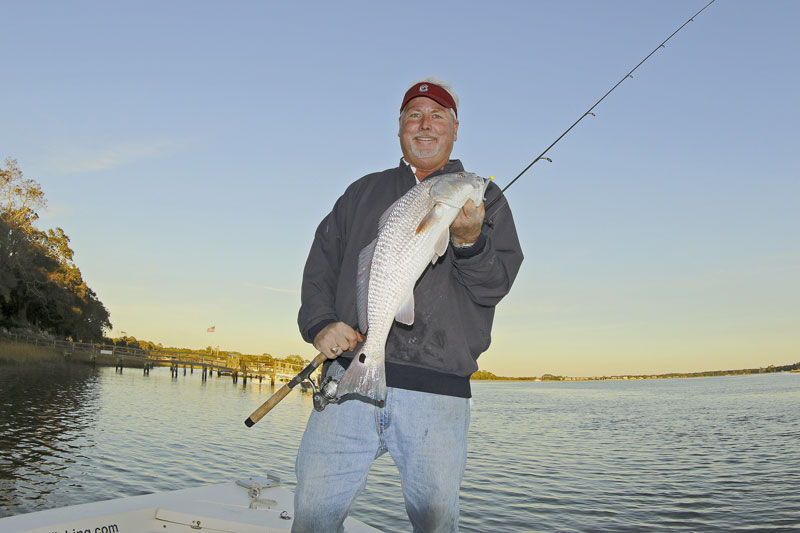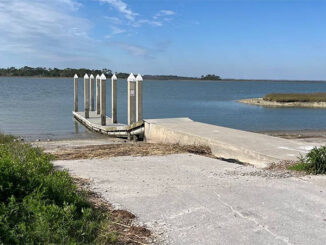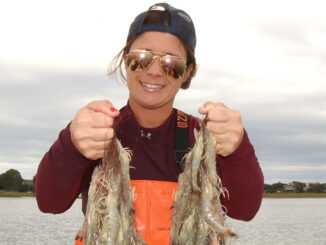Small lures catch big fish during cool water months
As inshore waters have cooled over past month or so, speckled trout and redfish have turned on strong in South Carolina’s Lowcountry, especially the Bohicket area, patrolled by Rob Bennett of Lowcountry Inshore Charters.
The best tip Bennett has for anglers is to scale down the size of your lure. He prefers 2 1/2-inch swimbaits like the Z-Man Slim Swimz. It was initially developed as a crappie lure, but Bennett said it works great for specks. Redfish like it, too, although they usually bite in different areas than the trout.
“It’s not uncommon to catch 50 speckled trout on these lures in a day this time of year,” said Bennett (843-357-3777). “You’ll get plenty of bites casting them along oyster banks on a rising tide.”
Bennett’s favorite oyster shell banks have deep water close by. But he said small feeder creeks are also good, especially the mouths of those creeks any time the tide is moving. When he finds shell banks within casting distance of spartina grass, docks and deeper water, he gets especially interested.
While catching trout in these spots, he said it’s not unheard of to catch a redfish or two. But when he really wants to target reds, he heads to docks, where they are often stacked in November.
Keep your lure moving, and be ready
The same small lures work fine for redfish, and these aren’t rat reds. He catches redfish of all sizes, including upper-slot ones.
“You want to cast the lure under the dock, but even getting close is often enough,” he said. “You have to be ready, because they will usually bite the lure as it is falling. They’ll grab it and run you around a dock piling if you aren’t quick enough.”
Bennett stresses keeping your distance from casting spots. The water is generally pretty clear in November, and fish can be wary.
“Making long casts is essential. That goes for trout along shell banks and redfish around docks,” he said. “It’s easy to push them away without realizing it. The more space you can give them, the better luck you’ll have.”
When fishing either type of spot, Bennett said you don’t want your lure to hit the bottom.
“Most of the time, these fish will hit the lure either when it is falling or when you first begin reeling. If you let it sink all the way to the bottom, you can get hung up on oysters,” he said. “And once you move in to free your hook up, the fish will scatter. So make long casts, keep the lure moving, and don’t sit still in one spot for too long if you aren’t getting any bites.”






Be the first to comment